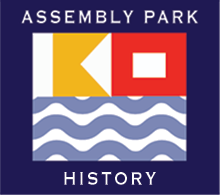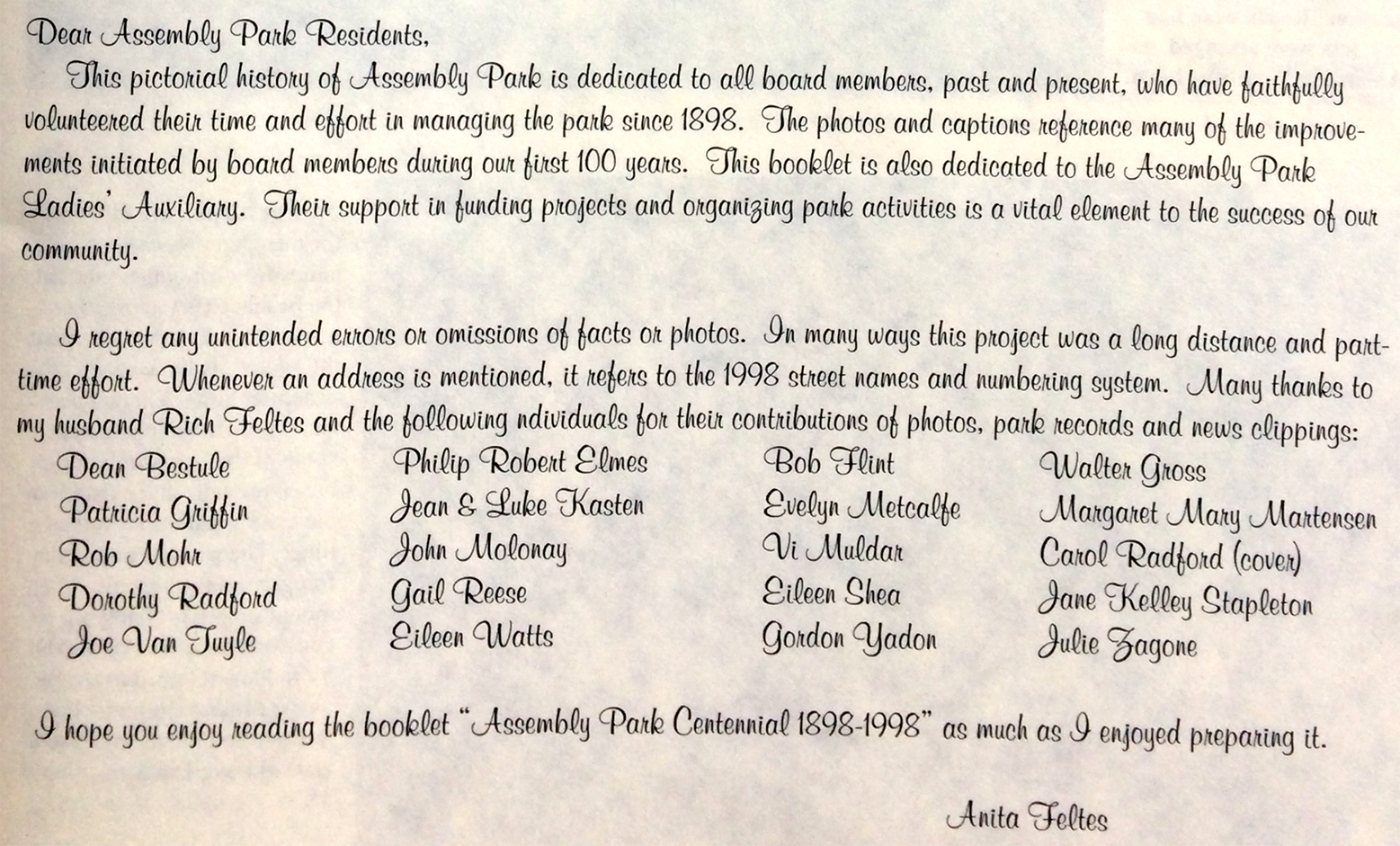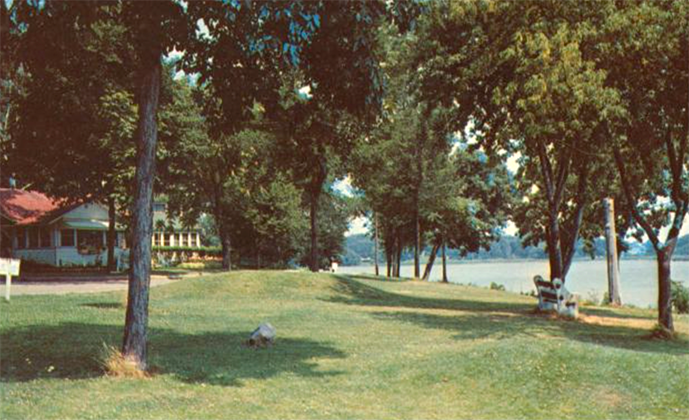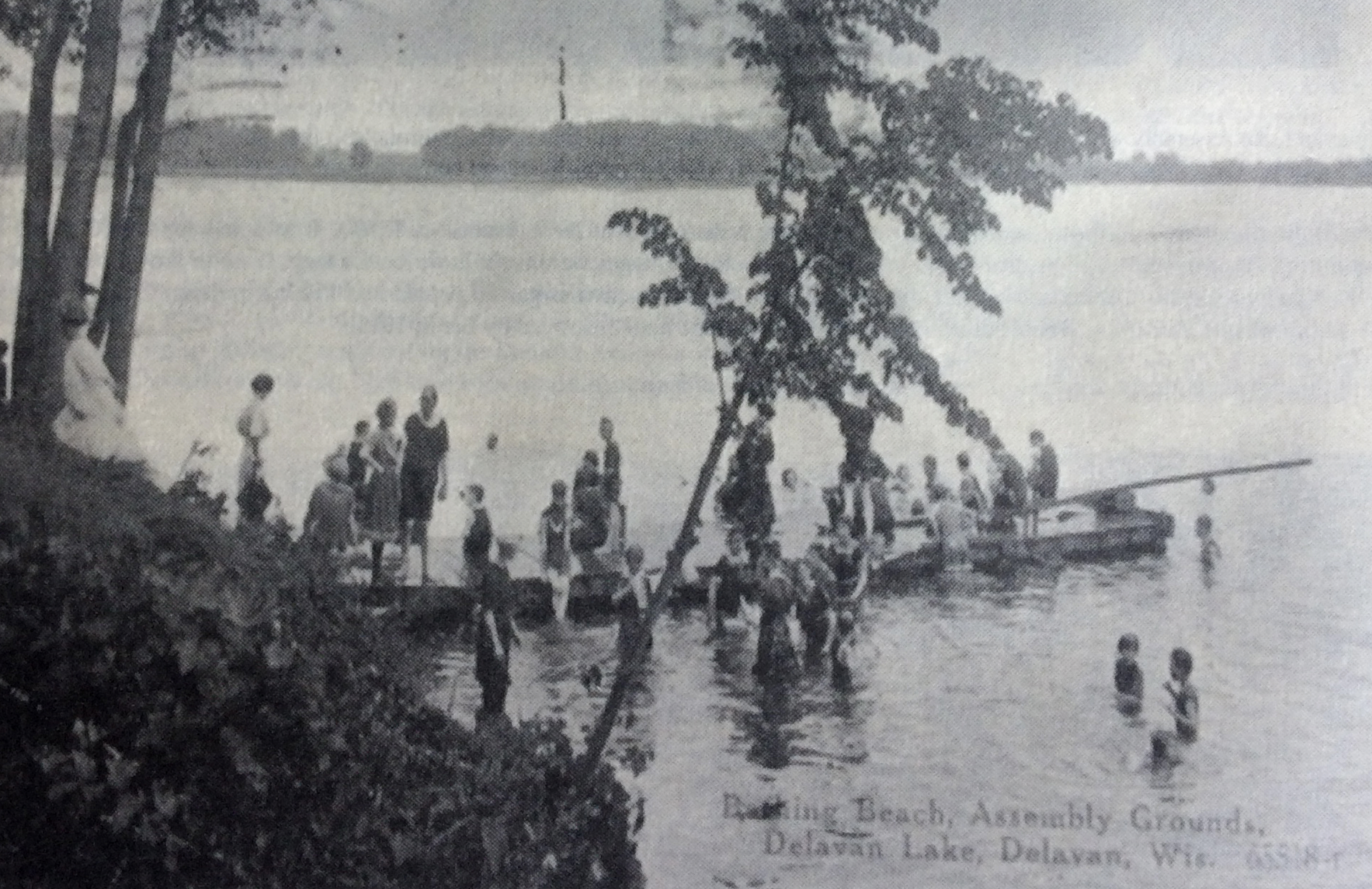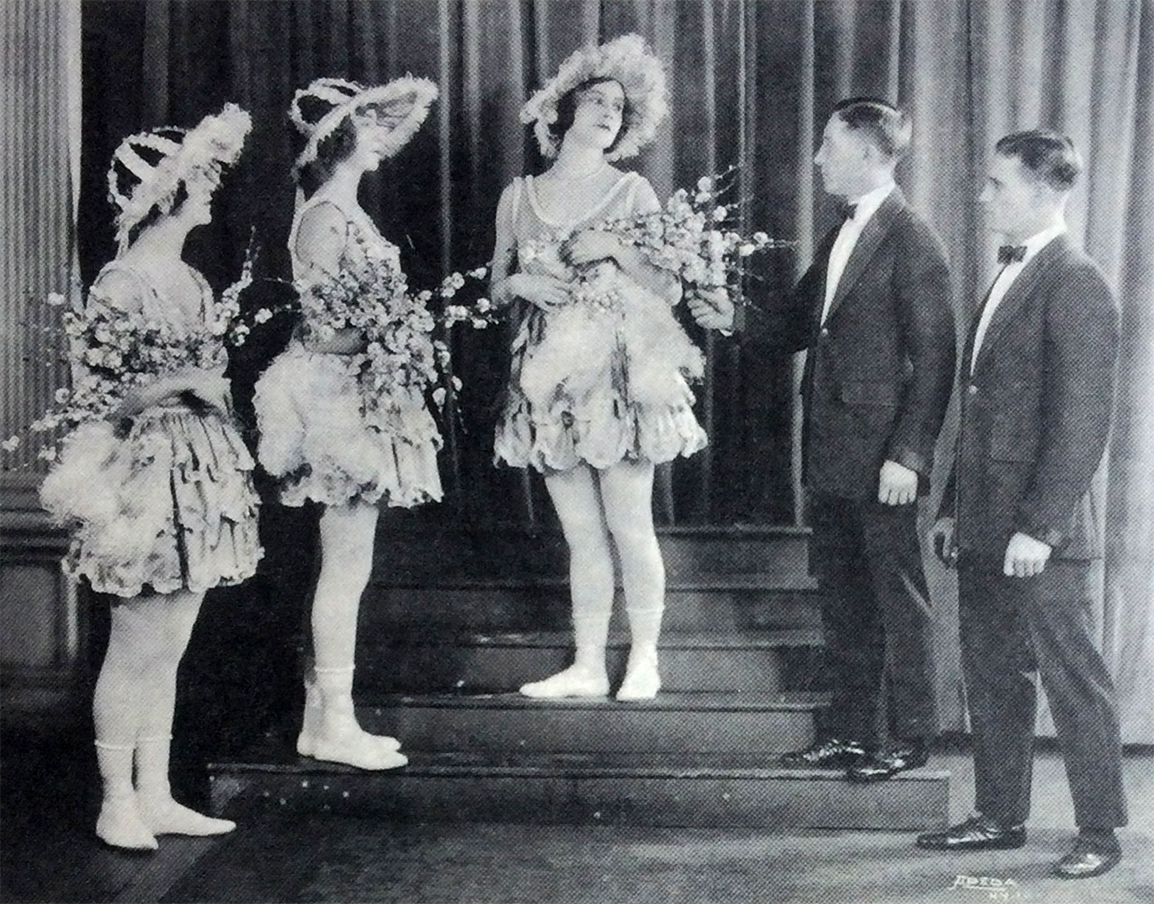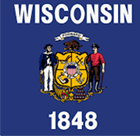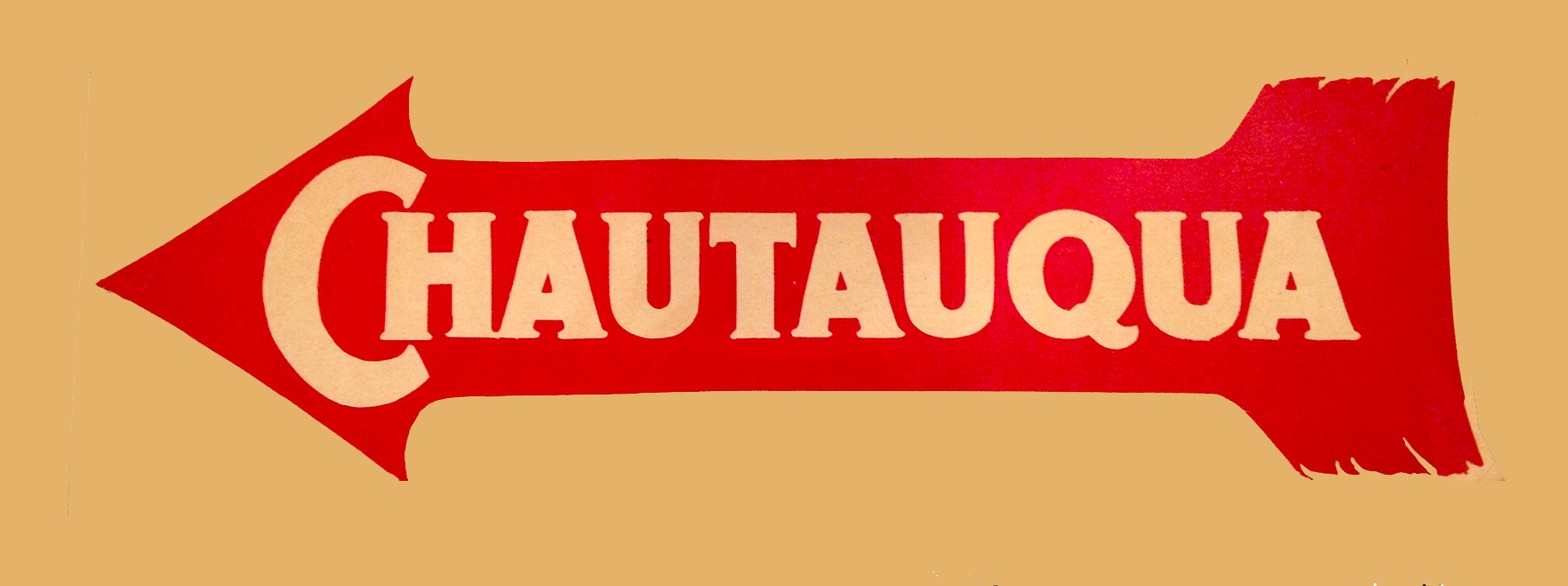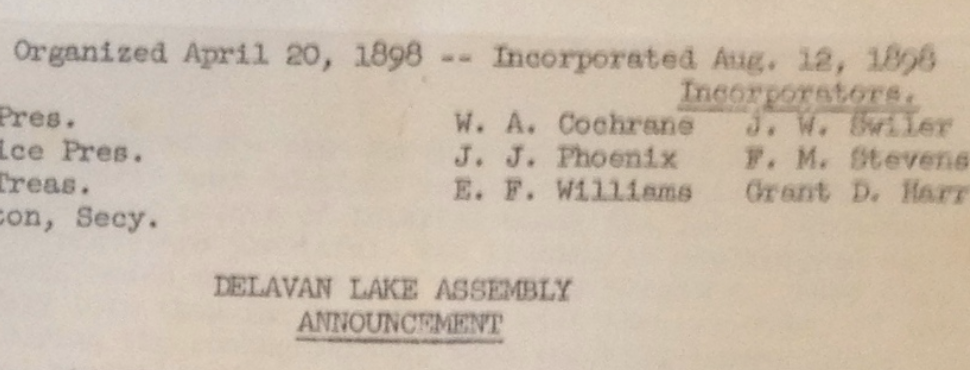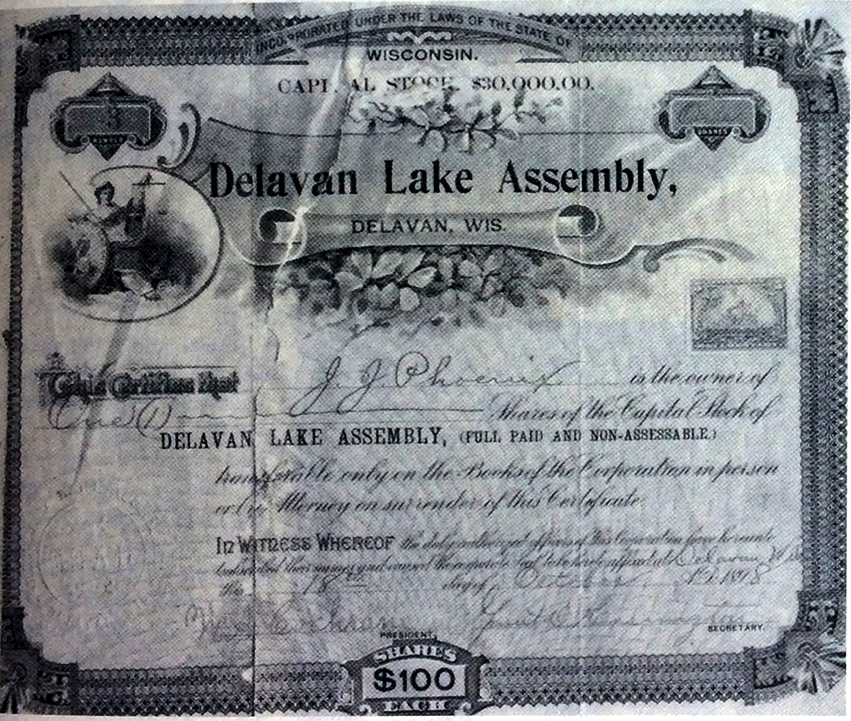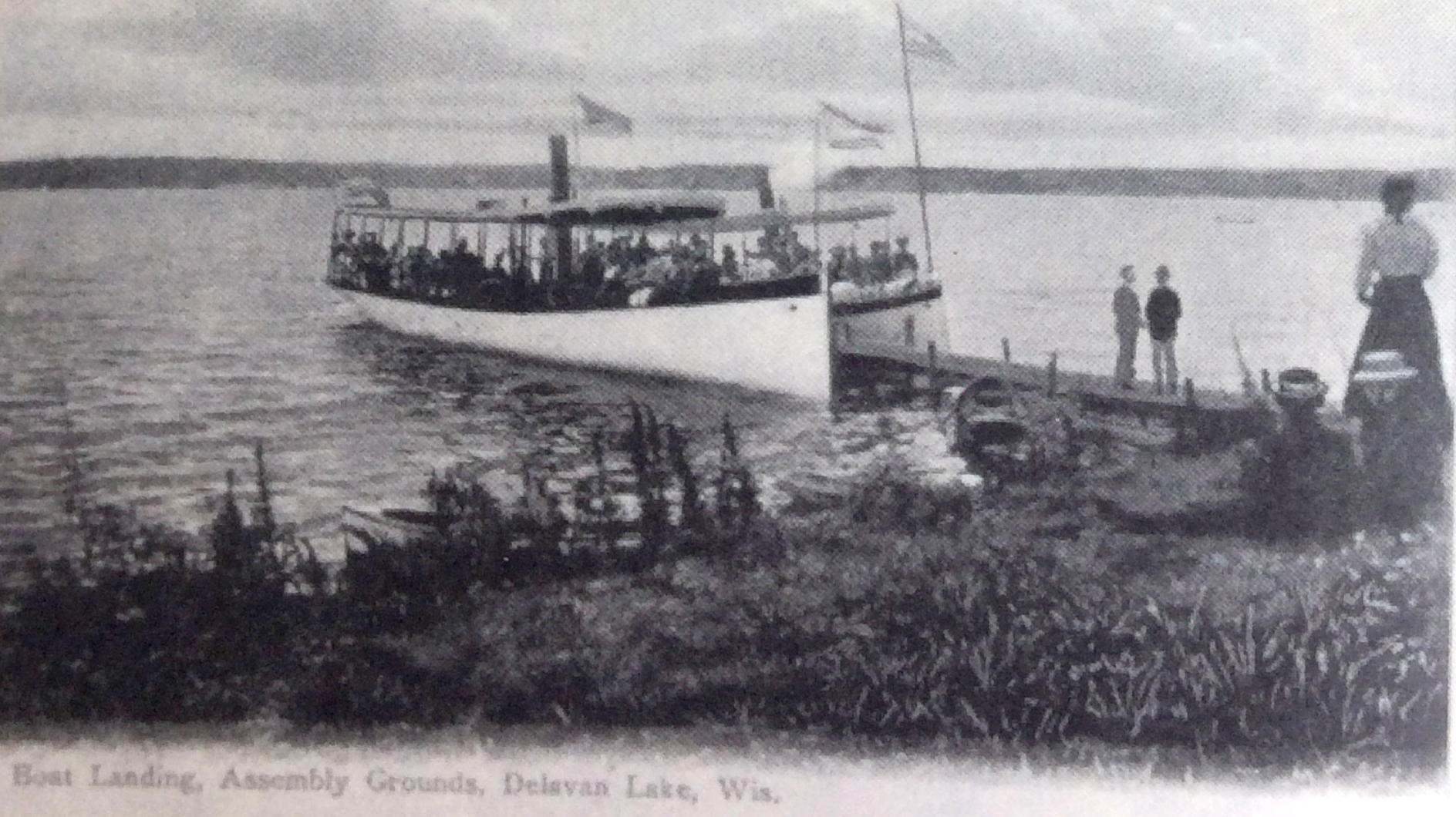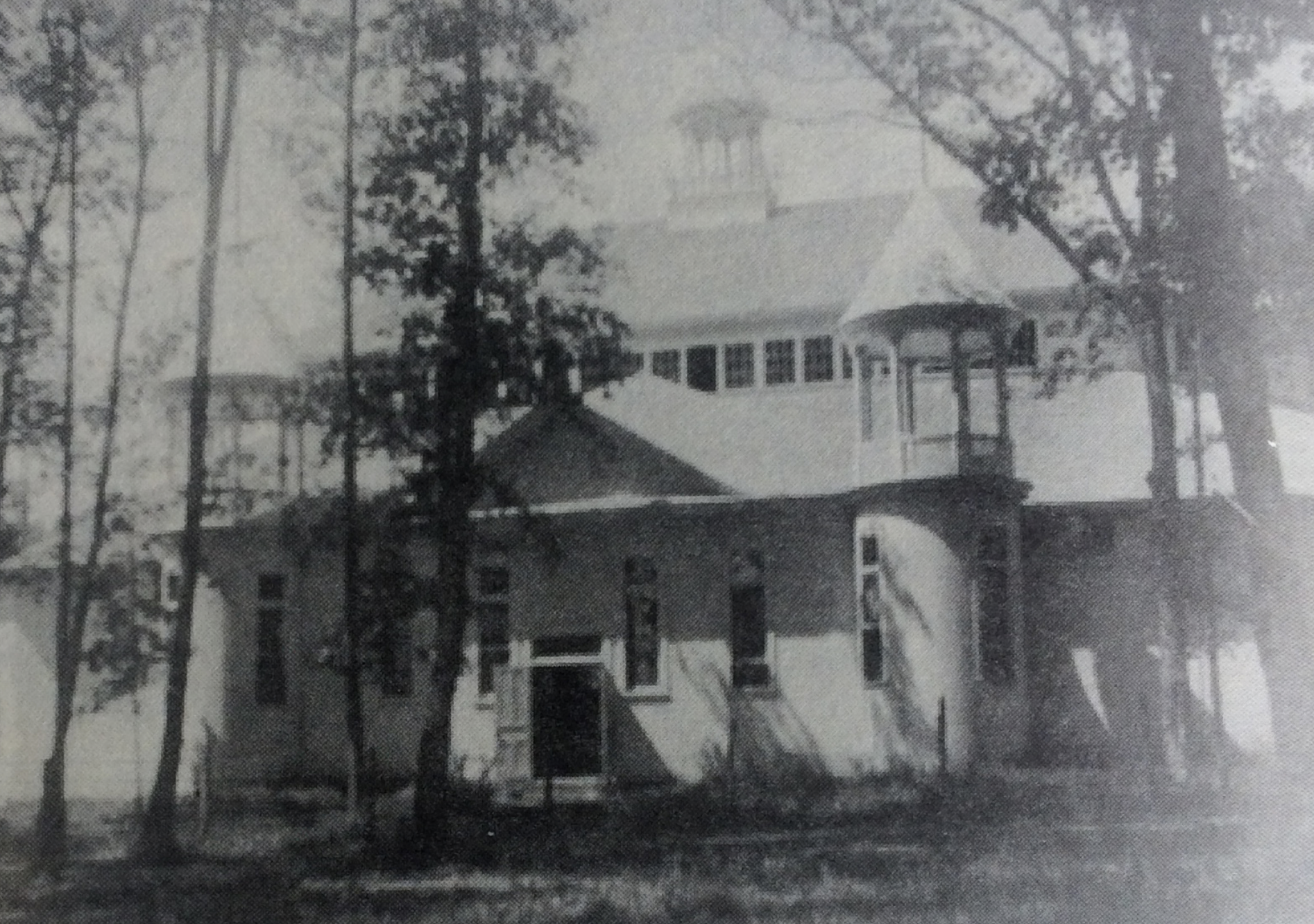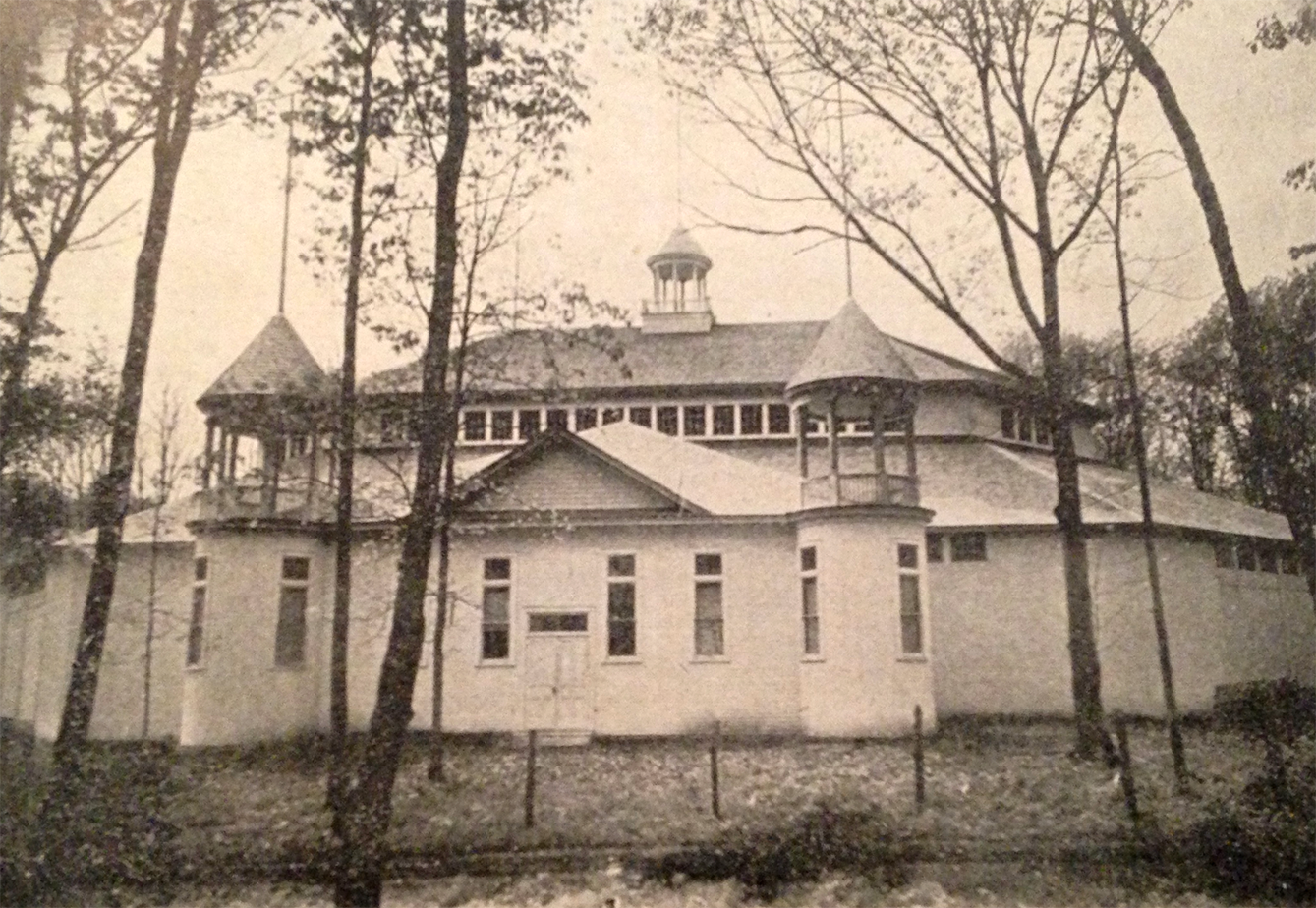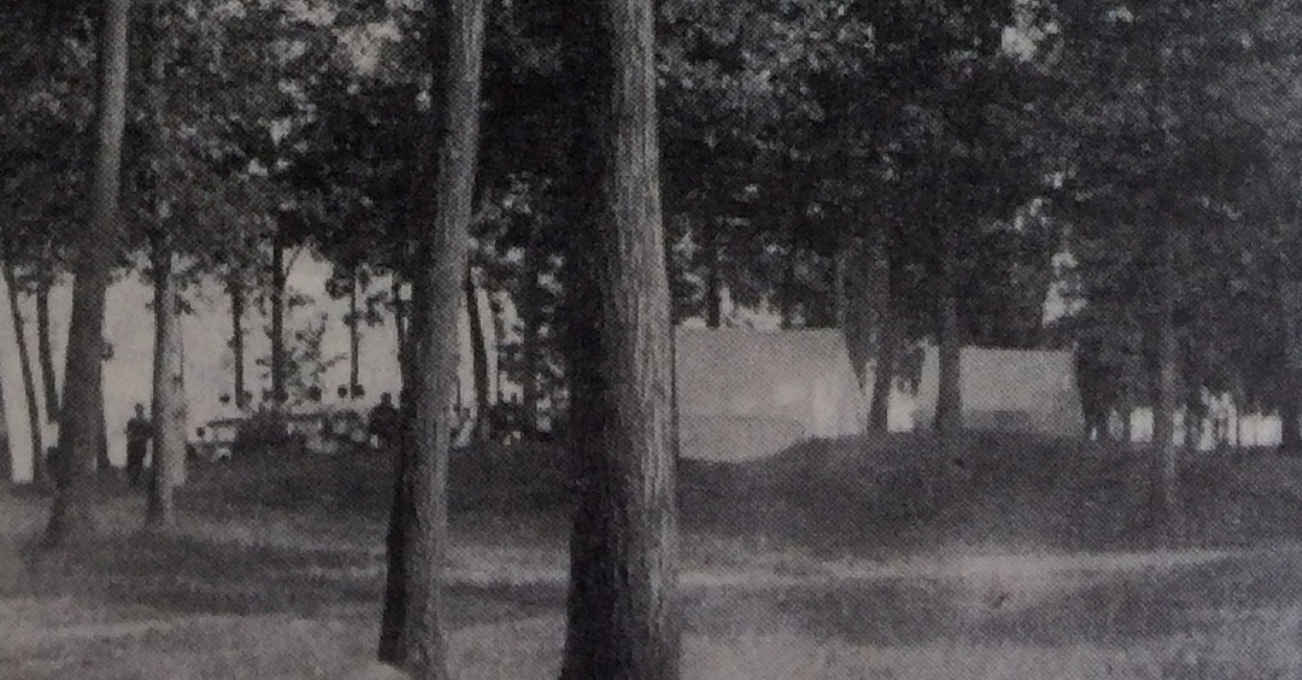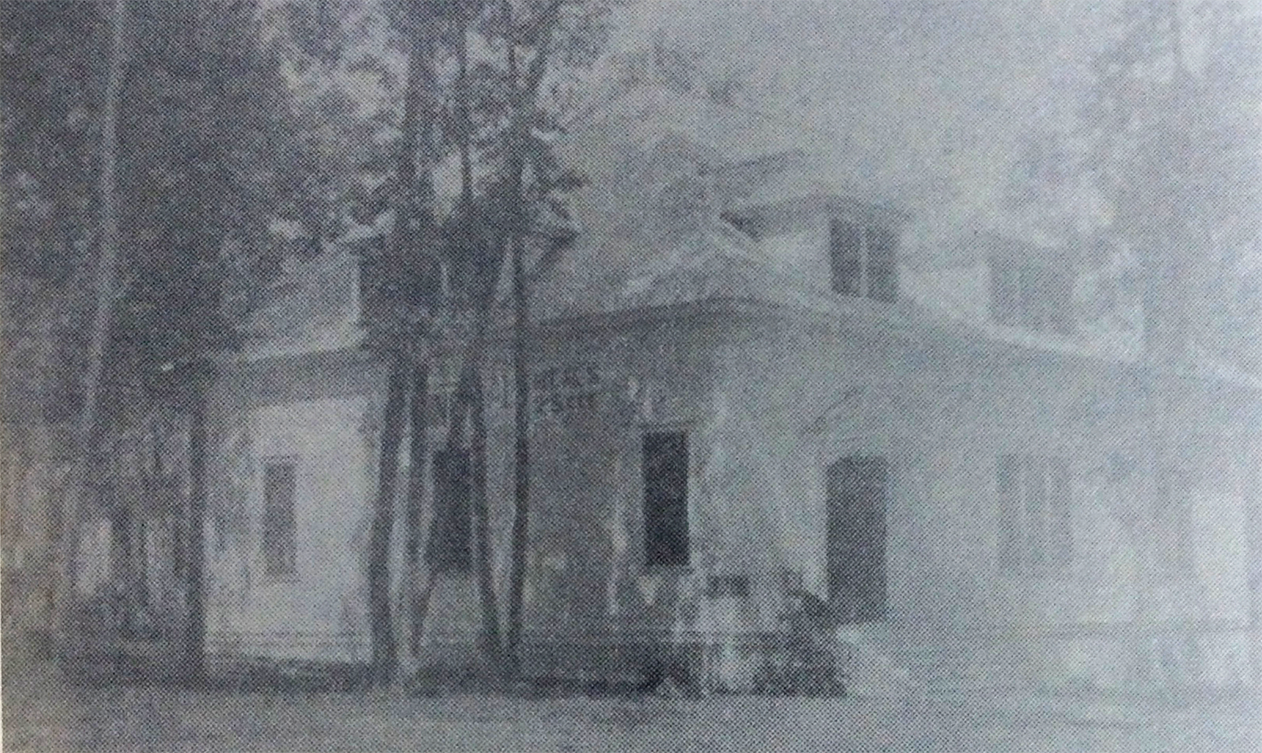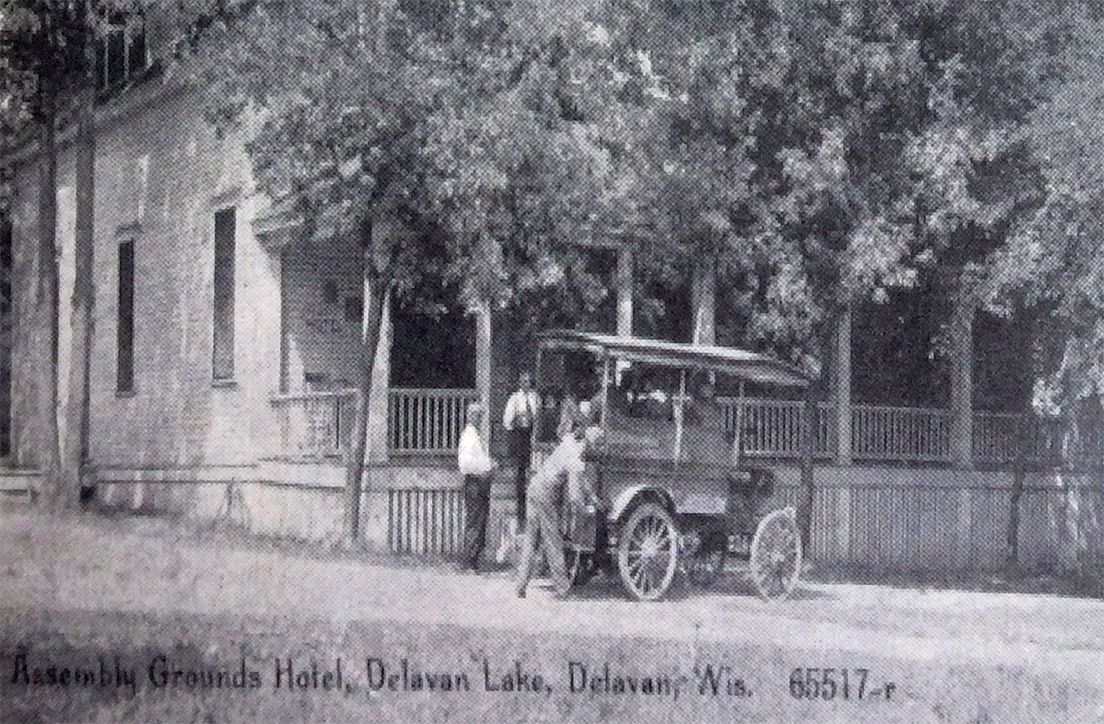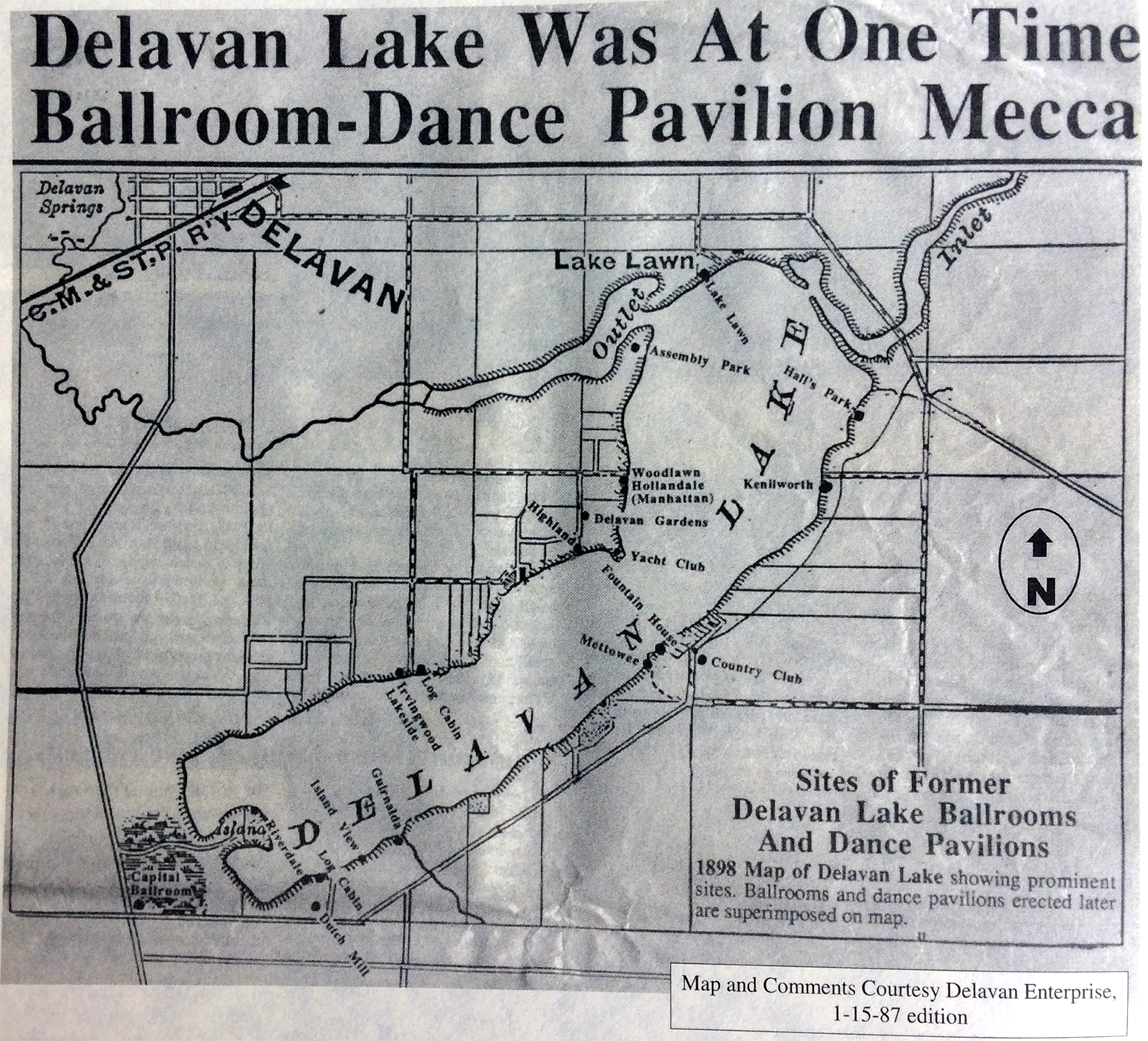We as a Park are thankful for all the individuals that prepared the Centennial Book - much of the content on the following pages are a result of the hard work that went into preparing this book. This work will be enjoyed for years to come. Thank you all!
Click on the photo to see larger view.

Lake Delavan is of glacial origin caused by the terminal moraine of the Delavan lobe. Lakes Delavan and Geneva lie between the Elkhorn and Darien Moraines.
• The Indian mounds, there are at least 159 mounds, were built around Delavan Lake (a few are in the park), by the Indians who are referred to today as Effigy Mounds Builders, probably before 1000 A.D. One was excavated and showed a construction in layers, cobblestone, gravel, fine white sand, blue clay, the bodies facing the lake, soil/clay mixture, then a fire apparently on top of baked clay. Archeologists who excavated and documented mounds in the area in 1911 increases the respect of the mounds. Early construction in the Park have destroyed many of the mounds.
• In 1925, the Delavan Women's Club, placed a marker near the mounds. In 1975 the maker was replaced by the current marker.
• Lake numbered well over 200, according to an archeological survey done in the late 1800's by Beloit College. Many were along the north shore of the lake where Lake Lawn Resort now stands. The Potawatomi Indians also settled around the lake in the late 18th century, although there were only an estimated 240 in the county. Some of their burial mounds are preserved in what is now Assembly Park.
• Between the years of 1800 and 1836 the Delavan area was part of the Indiana Territory, followed by the Illinois Territory
1830
• Between the years of 1800 and 1836 the Delavan area was part of the Indiana Territory, followed by the Illinois Territory.
• In 1936, Allen Perkins, the first known settler in the Delavan area was from the Rockford, Illinois area.
• Samuel Phoenix and his brother both from New York arrived in Chicago and traveled north, in 1836, there search desirable spot to start with a temperance colony.
• Delavan was named by Phoenix - E. C. Delavan, whose surname the city now bears, was a temperance leader in New York State.
• Pottawatomie Indians ceded these lands to the US government, following the Blackhawk war.
• The tribe agreed to move west of west of the Mississippi River.
1840
• The Mabie Circus created a circus dynasty that survived in Wisconsin for the next 100 years - the circus was located where Lake Lawn Resort is currently located on Delavan Lake.
• Its famous rogue elephant, "Romeo", stood 10+1⁄2 feet high, and 10,500 pounds.
• In 1840 Samuel Phoenix died in 1840 from tuberculosis and his brother died in 1842. Both are buried in Old Settler’s Cemetery, located in the 300 block of McDowell Street.
• They began wintering in Delavan in 1847 and bought land around the lake.
• The property that later became Assembly Park was called Mabie Woods.
• Mabie Woods owned for many years by the Mabie family. It was purchased from their heirs.
• The circus was sold to P.T. Barnum in 1892.
• Fred and Blanche Cevene circus acrobats, made at least 17 property purchases in Assembly Park.
• He and his wife traveled around the world with their circus act.
• Click here for more photos and information
1850
1860
• When Juliet died on a cold winter day in 1862.
• A team of horses drag her onto the frozen lake.
• Saws were used to cut a circle around her carcass and Juliet sank to her resting place.
• Seventy years later, in 1932, a giant leg bone was recovered from the lake and sent to the Chicago Natural History Museum.
1870
• In 1871, The P.T. Barnum Circus, “The Greatest Show On Earth,” was founded in Delavan.
• In 1875 Development at Delavan Lake began with the first permanent residence Dr. Fredrick L. VonSuessmilch in along the north shore of the lake.
•Many of the residents were summer retreats for Chicagoans who came up on the train, which at that time stopped here 6 times a day during the summer months.
• Every summer during its nine-week season, Chautauqua Institution provides an array of programs including fine and performing arts, lectures, worship services, and religious programs, as well as recreational activities.
• Christian instruction, preaching, and worship were a big part of the Chautauqua experience. Although the movement was founded by Methodists, nondenominationalism was a Chautauqua principle from the beginning.
World Events
Presidents
1830's
• Andrew Jackson • Martin Van Buren
1840's
• William Henry Harrison • John Tyler • James K. Polk • Zachary Taylor
1850's
• Zachary Taylor • Millard Fillmore • Franklin Pierce • James Buchanan
1860's
• James Buchanan • Abraham Lincoln • Andrew Johnson • Ulysses S. Grant
1870's
• Ulysses S. Grant • Rutherford Birchard Hayes
1880's
• Rutherford Birchard Hayes • James A. Garfield • Chester A. Arthur • Grover Cleveland • Benjamin Harrison
1840's
1850's
1860's
1870's
1880's
• Coca-Cola is developed.
1890's
1880
1890
1891
1892
• Lake Delavan is the lake on which Buddy Melges learned to sail.
• Buddy' Melges, Jr. is considered to be the greatest sailor in the sport of sailing.
1893
1894
1895
• Delavan Lake Improvement Association - started its goal to help improve, protect Delavan Lake's quality. More info
1896
• Electricity was first brought to Delavan.
1897
• Delavan became a city.
• Edward Cornelius Delavan (1793–1871) was a wealthy businessman who devoted much of his fortune to promoting the temperance movement. He helped establish the American Temperance Union - Prohibition or dry towns in Illinois and Wisconsin were named in his honor, but, E.C. Delavan never was in Delavan.
1898
• Even at the first meeting in 1898, three meals a day were served - presumably from tent structure.
• The 38 acre parcel of property, know as Mabiewood, was purchased by Delavan Lake Assembly for $15,000 from the heirs of the Mabie family.
• The Assembly Park charter provided for the issuance of 300 shares of stock par value of $100.
• The dates of the first Assembly were July 26 through August 3, 1898. It attracted up ot 3,000 people a day during the two-week sessions.
• The 1900 session included William Jennings Bryant. Programs included lectures on religion, politics, science, literature, music and arts. Sporting events, especially water, were organized.
• The Delavan newspaper from July 28, 1898 said “a steady stream of teams was nearing the entrance to the grounds from the west. while the boat from Lake Lawn was making half hour trips and leaving full loads at the pier every trip.”
1899
• The Delavan Lake Auditorium (above) side of the building facing the lake.
• Thousands of people were fed daily during the summer sessions.
• The Delavan Lake area was widely known for its summer resorts and hotels.
• Most of which contained ballrooms or dance pavilions.
• At one time there were probably more ballrooms per capita on Delavan Lake than any other locale in America.
Thanks to the Delavan Historical Society for this information which helped develop these pages.
https://delavanhistory.org/some-history/
Lake Lawn Resort, and
https://www.lakelawnresort.com/info/lake-lawn-history/
https://www.wikipedia.org/
Gerri Kernes,
Kate Herron,
Arlene Frank,
Jeannie LaMarre,
Kathy Griffin,
Lake Lawn Resort,
The Delavan Wisconsin Historical Society,
for and many more for sharing the an article with the history of Assembly Park. If your name was over looked please email [email protected]. Thanks to all!
